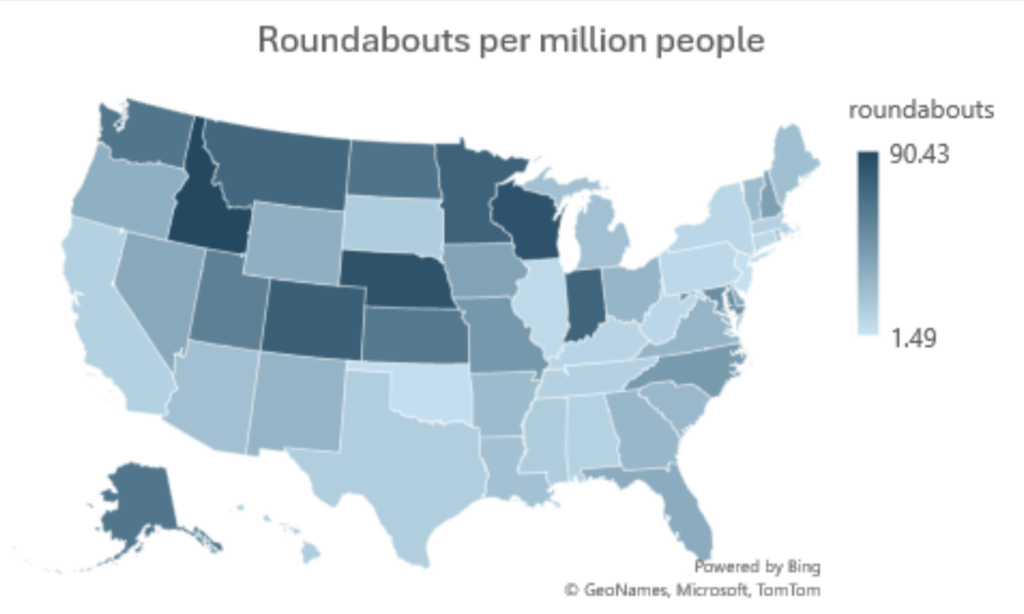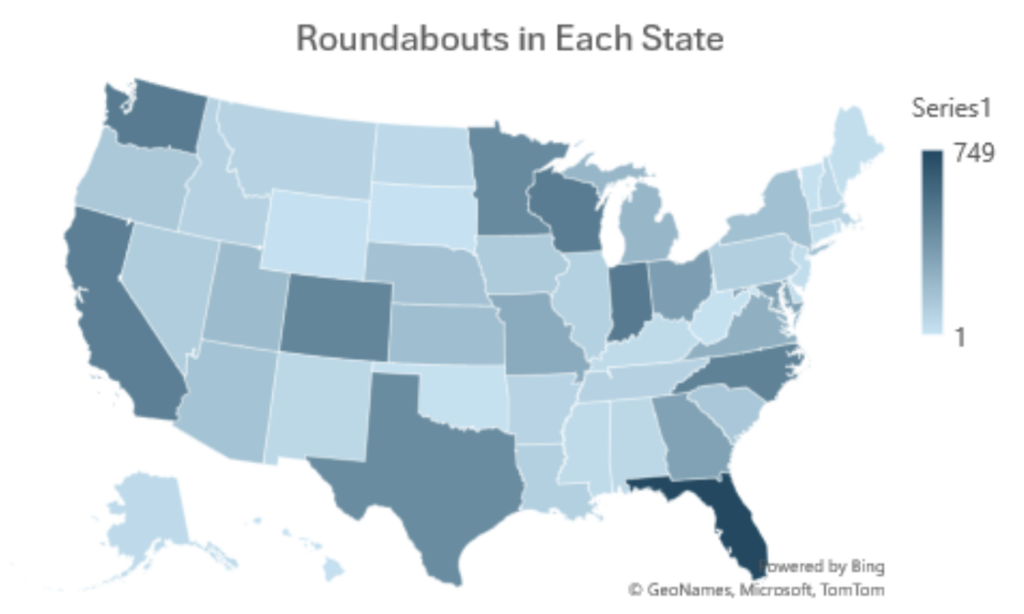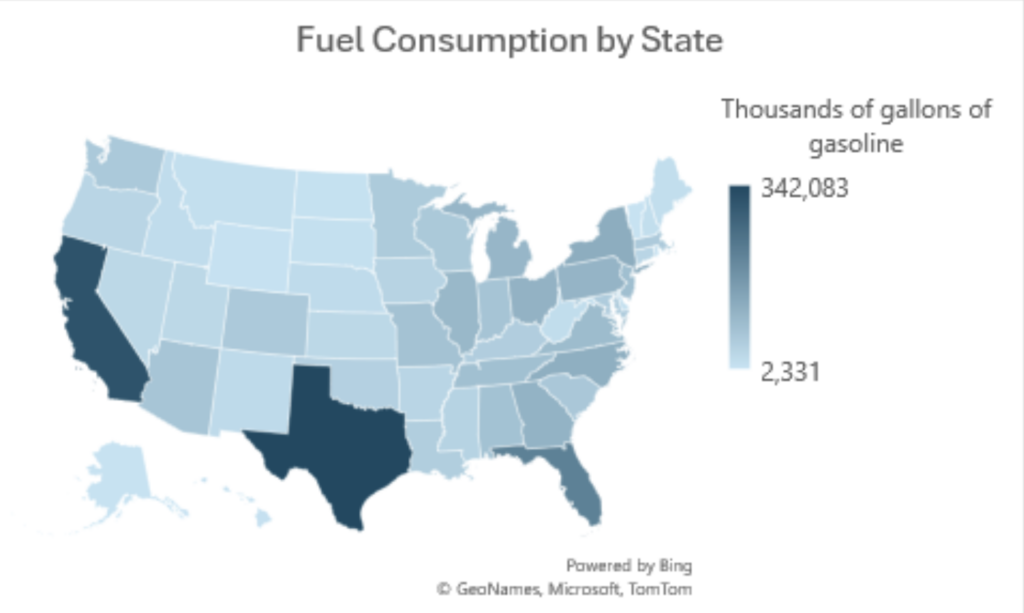Introduction
Roundabouts were first introduced in the United States in the early 1990s. Although circular intersections had existed before, they were typically traffic circles or rotaries, which are larger and have different design and traffic control features. Modern roundabouts, which are smaller and prioritize continuous, yield-controlled flow, began gaining popularity after studies demonstrated their benefits in improving safety and reducing congestion.
The earliest examples were built in Nevada and Florida, but it wasn’t until the mid-to-late 1990s that roundabouts began to spread widely, thanks to positive safety and efficiency data from initial installations.
Roundabouts offer a range of benefits across safety, environmental, and economic factors, with these impacts varying significantly by region. In the United States, the number of roundabouts per million people varies widely, and comparing this data with other countries provides valuable insights. Additionally, the analysis includes the impact of roundabouts on gasoline consumption, particularly in states with high-traffic areas. By examining these high-traffic spots and determining where roundabouts are most effective, we can identify optimal locations for new installations to maximize safety and efficiency.
Why Roundabouts?
Vehicle collisions remain a pressing issue in the United States and beyond because of their unprecedented effects on the economy and, of course, the daily lives of humans. To make an impact with this unfortunate issue, more cities are implementing and converting roundabouts into intersections to lower the odds of these collisions.
Safety
The most common collisions at four-way intersections are right angle, left turn, and head on collisions, these are all eliminated by roundabouts. Other reasons for collisions are included on this graph, which depicts the critical attributions of driver error, and a downside to roundabout investment. One study in Washington state said that 40% of people understood how to manage a roundabout.


Water Quality
Wildfires also have a significant effect on water quality. After a fire, soil in the area has difficulty absorbing moisture, resulting in watersheds retaining greater amounts of nitrogen and carbon dioxide up to 15 years after a fire. This is problematic, as about half of the water supply in the Southwest originates from forests, with 3,400 public drinking water systems being located in national forests across the country. Wildfires can also release dissolved organic matter that can be problematic for water treatment and increase costs . Additionally, wildfires can burn man-made structures composed of plastic, such as service lines. These burned or melted plastics can end up in drinking water and pose risks to human health.
Economy
In a study that took 19 rural intersections that all were in higher speed zones and originally had stop signs that had been converted to roundabouts, the results shared a shocking 85% decrease in collisions resulting in evident injury. Taking this percentage and if considering the average cost of an injury collision to be around $40,000, out of ten crashes resulting in injuries, this conversion could have prevented nearly $340,000 in charges for those involved. Despite the wiggle room for accurate rates, bring that logic to scale with the estimated 1,593,390 crashes in 2020, nearly 190000 times more in charges. Policymakers should be inclined to consider the rate of car accidents in urban and rural areas and implement roundabouts accordingly to promote safer roads.

Economy
In a study that took 19 rural intersections that all were in higher speed zones and originally had stop signs that had been converted to roundabouts, the results shared a shocking 85% decrease in collisions resulting in evident injury. Taking this percentage and if considering the average cost of an injury collision to be around $40,000, out of ten crashes resulting in injuries, this conversion could have prevented nearly $340,000 in charges for those involved. Despite the wiggle room for accurate rates, bring that logic to scale with the estimated 1,593,390 crashes in 2020, nearly 190000 times more in charges. Policymakers should be inclined to consider the rate of car accidents in urban and rural areas and implement roundabouts accordingly to promote safer roads.
State Comparison

The density of roundabouts distributed throughout the country.

The number of roundabouts distributed across the country.
https://www.eia.gov/state/seds/sep_fuel/html/fuel_mg.html

When considering the ideal 34% reduction in fuel consumption with roundabout conversion, states with higher fuel consumption in dense areas should consider adding roundabouts to limit vehicle delays that cost more for the consumer and the air. Roundabouts can be an additional method in paving a green future with minimal carbon emissions.
Learn more about transportation and it intersects with innovation and infrastructure.
